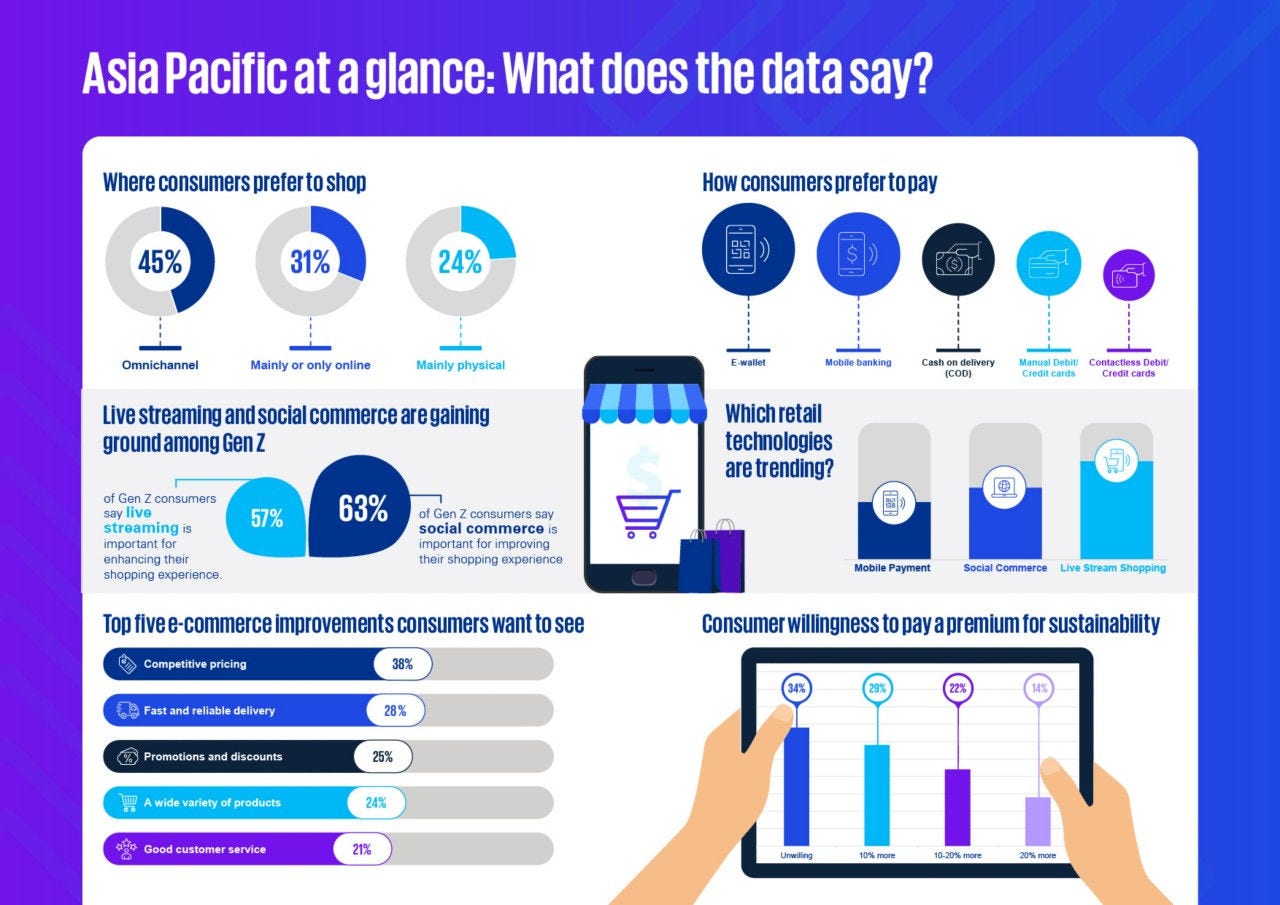Following on from the post-pandemic recovery, consumers across the Asia-Pacific region have been adapting to many challenges: inflation, a cost-of-living crisis, and supply-chain-related instability of product availability, to name a few.
KPMG together with GS1 has produced this report based on a survey of 7,000 consumers across 14 markets in the region reflecting multiple patterns and expectations among consumer groups. About half of the respondents in each market were from the Gen Z group (18 to 24), and in addition to the research, the report features interviews with senior C-suite-level executives from market-leading retailers, brands, and e-commerce marketplaces.
One overriding conclusion is clear: The era of seamless commerce has arrived and while both online and offline channels remain popular throughout the region, traditional retail business models are unlikely to meet the expectations of many of today’s consumers. Retailers and brands have to adapt or face the consequence of not moving with the market.
Read the report today to learn more about navigating the retail landscape, with market profiles for across the region, including Aotearoa New Zealand.









